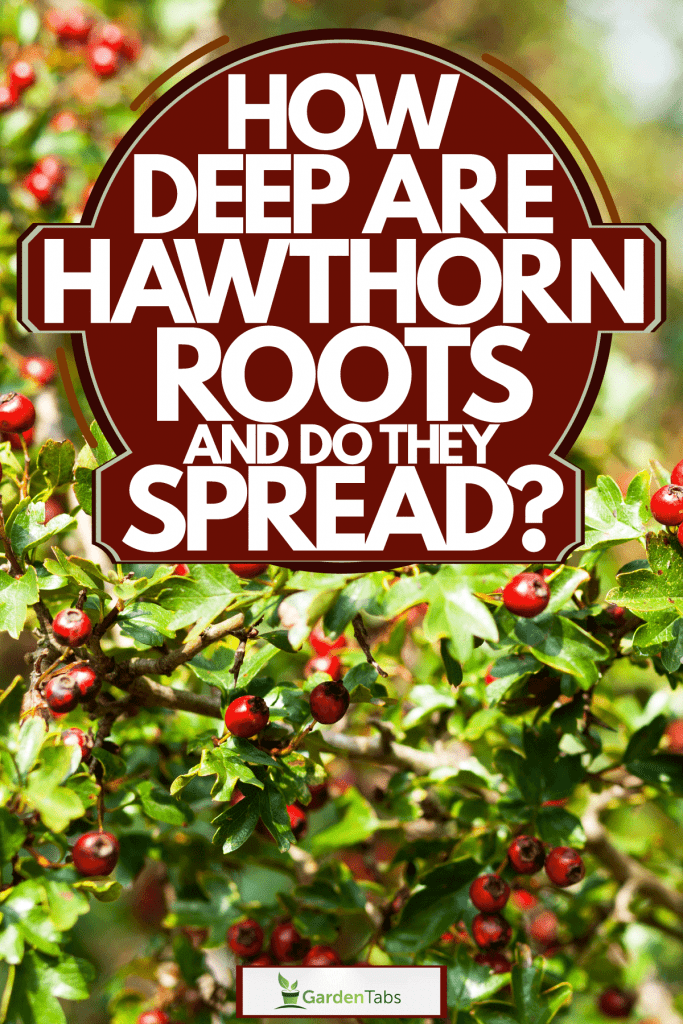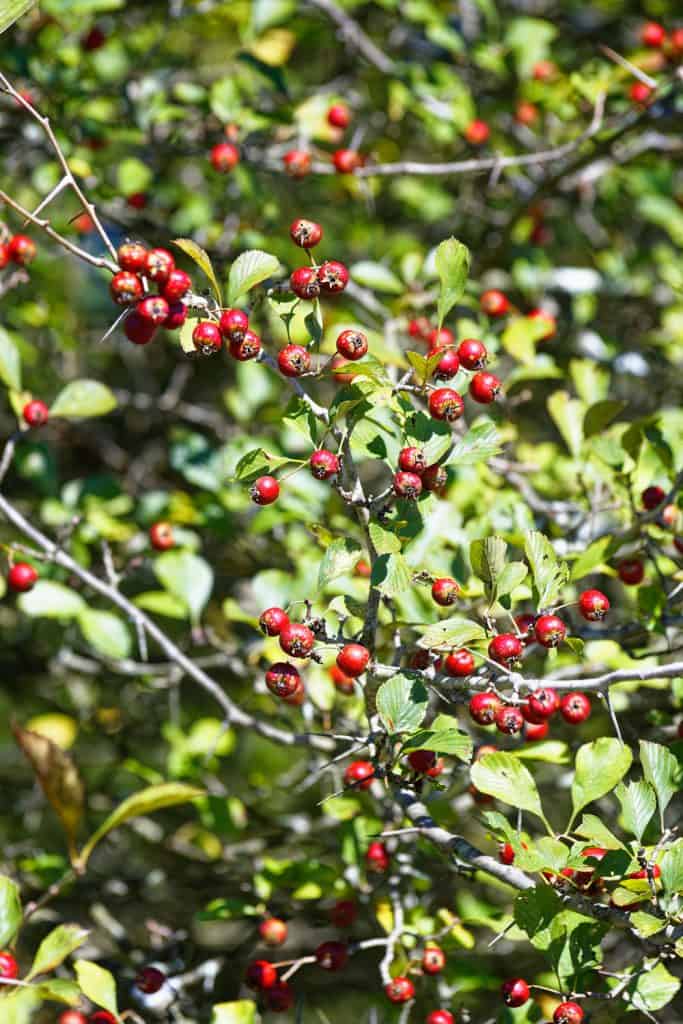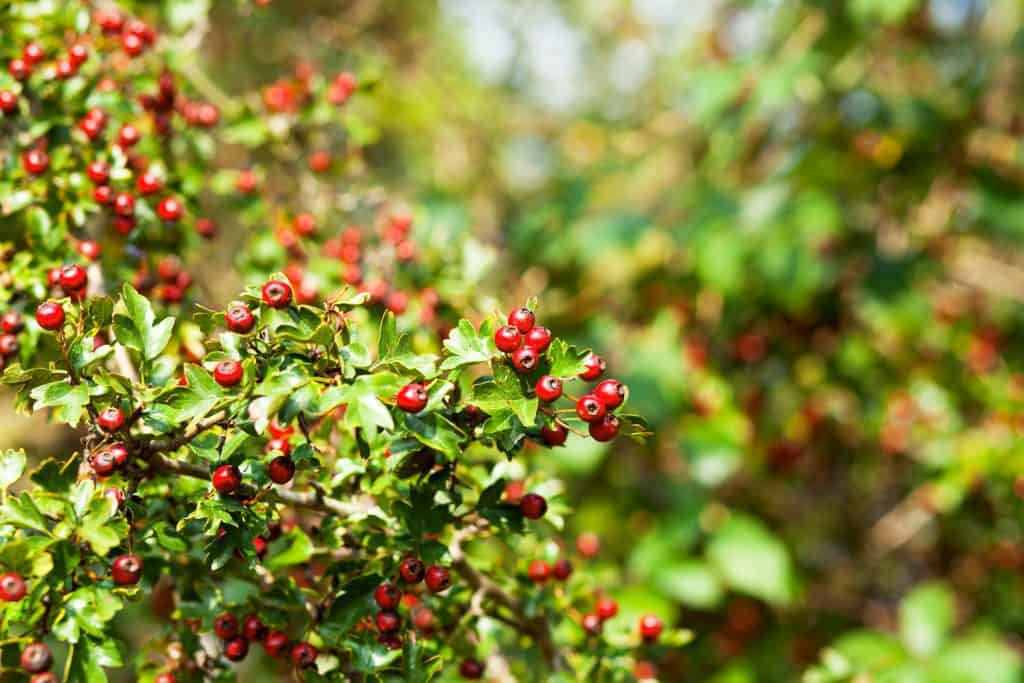You are considering adding some hawthorn trees to your landscape but want to make sure it is a good fit. There are several considerations to think about before deciding what plants and trees you want to include on your property. This post will give you more details about hawthorn trees to help you decide if it is a good match for your land.
Common English hawthorn or Washington hawthorn roots may reach about 30 to 40 inches deep. The root system does not stay near the surface or take away moisture from other plant species. English hawthorn and Washington hawthron roots may spread up to 25 feet wide in well-drained soil. Indian hawthorn is classified as a shrub and has a shallow root system that is not harmful to nearby plants or property.
Now you know more about the root system of the hawthorn, but you probably have other questions. You are wondering if the hawthorn is very invasive or can be controlled. You might wonder whether it's a tree or a shrub and what that means for your landscape. You probably also would like to know the difference between different varieties of hawthorn, so you can make the right choice for your landscaping goals. Keep reading to learn more.

Does Hawthorn Have Deep Roots?
Hawthorn roots generally need 30 inches of soil to prevent the roots from crowding the shallow root space near the ground surface, depending on the variety. These roots are not as deep as larger trees, which can reach up to 20 feet deep in some cases. Hawthorn roots can spread out to 25 feet but rarely have surface roots that hinder your ability to plant other species nearby. The roots can be very difficult to remove after the first year if this is a plant you are trying to control.

The depth of the roots and the height of the plant can vary based on the variety of hawthorn. Here are some common varieties and their expected growth.
Common Hawthorn
Common hawthorn is also known as English hawthorn. This is expected to grow to up to 15 to 25 feet tall and have a root system as deep as three to four feet. This plant can be grown as a tree or controlled to be a shrub or espalier plant. This is the one invasive species of hawthorn, so use caution when planting.
Click here to buy 20 English Hawthorn Tree or Shrub Seeds from Amazon.
Indian Hawthorn
This plant does not have deep roots and is expected to be only three to six feet in height. This means it would be a great shrub plant or hedge plant. It can be used as a windbreak, privacy hedge, or just a plant to fit into small spaces you have available on your landscape. The roots of the Indian hawthorn are approximately 18 inches deep.
Click here to buy this 3-gallon Snow White Indian Hawthorn shrub from Amazon.
Washington Hawthorn
The Washington hawthorn is the larger variety that can reach 25 to 35 feet in height. The root depth is not expected to be any deeper than the Common hawthorn when it is uncontrolled. Unlike the Common hawthorn, this variety cannot be controlled to be grown as a shrub or hedge plant. This is a tree and will have a deep root system and cannot be trained to stay within certain parameters of a landscape.
Click here to buy Trupadu Store Washington Hawthorn Trees from Amazon.
Are Hawthorn Trees Invasive?
Only one variety of hawthorn is considered invasive. It is Crataegus monogyna, otherwise known as English hawthorn or common hawthorn. This variety also has roots that are thorny and difficult to remove once they become established. They will crowd out and kill other plants, which is part of the invasive label. Other varieties of hawthorn, including the Indian and Washington, are not invasive. Hawthorn trees are legal to plant, although some caution should be exercised if planting in the central to northern Pacific coast region.
If you are looking for landscaping options with non-invasive roots, check out this article "15 Fruit Trees With Non-Invasive Roots."
How Does Hawthorn Spread?
It is not root spreading that causes the hawthorn to invade and crowd out other plants. It is the delicious berries that are eaten by birds and deposited with relatively high germination rates. The seed passing through the bird or animal aids in the germination process. Hawthorn roots can be controlled relatively easily by keeping the plant small as a hedge plant or shrub.
How Deep Are Hawthorn Hedge Roots?
Indian hawthorn and English hawthorn are good varieties to be planted as a hedge or shrub plant. The roots of these plants are shallow when controlled and pruned to hedge or espalier size. You can expect hedge plants to have roots about 18 inches deep when they are contained and pruned to shrub size. Espalier plants are grown vertically near a wall, shed, or house. It is a great way to grow fruit or other plants without taking up too much space.
For more details on growing fruit vertically in small spaces, check out this post, "Which Fruit Trees Can You Espalier?"
What Climate Is Best For Hawthorn?
The best climate and conditions vary based on the variety of hawthorn. Here are the details for the most common varieties.
English Hawthorn
This is the common, invasive species of hawthorn. It is hardy to zones 4b to 8. It can tolerate poor air and soil conditions. For the best outcome, place them in well-drained soil with full sun to light shade. English hawthorn is drought tolerant once established but would benefit from regular watering during the first two years.
Indian Hawthorn
Indian hawthorn is hardy to zones 8 to 11. Indian hawthorn can also tolerate poor soil but cannot tolerate too much shade. Indian hawthorn needs regular watering until it becomes established. Once the Indian hawthorn is established, it is considered moderately drought tolerant.
Washington Hawthorn
The Washington hawthorn is hardy to zones 5 through 9 and is the most disease-resistant hawthorn variety. The Washington hawthorn also prefers full sun to light shade conditions. It needs regular watering until it becomes established, then it becomes moderately drought-tolerant.
One equally positive thing about all varieties of hawthorn is that they are drought resistant. If you live in a desert or a drier climate, you may wish to find some other plants that can tolerate long periods with small amounts of water. You can find some more drought-tolerant plants by checking out this article "37 Outdoor Plants That Need Little Water."
In Closing

The common hawthorn is also known as the English hawthorn, and it is considered invasive. It does not invade other plants by spreading roots but by germinating after birds digest the delicious berries. The good news is that English hawthorn roots are easily controlled by keeping limiting the amount of space it can use to expand. You can also keep the plant trimmed as a hedge or shrub rather than a plant to keep the root zone small. Hawthorn roots can be shallow at 18 inches or less if controlled in this way, otherwise, they can go up to three feet deep for larger trees.
Here are some more resources, if you are looking for shrubs or hedge plants for your landscape. For the best privacy shrubs, check out "17 Best Privacy Bushes And Shrubs."
To learn about shrubs or hedges that are shade-tolerant, check out "19 Flowering Shrubs For Shade."



